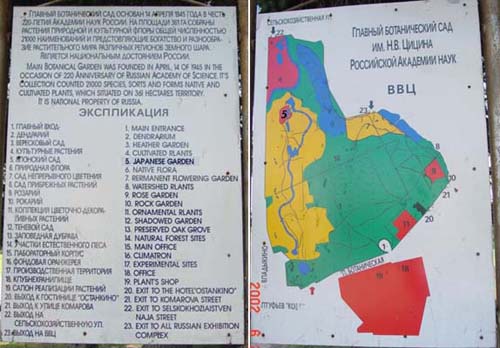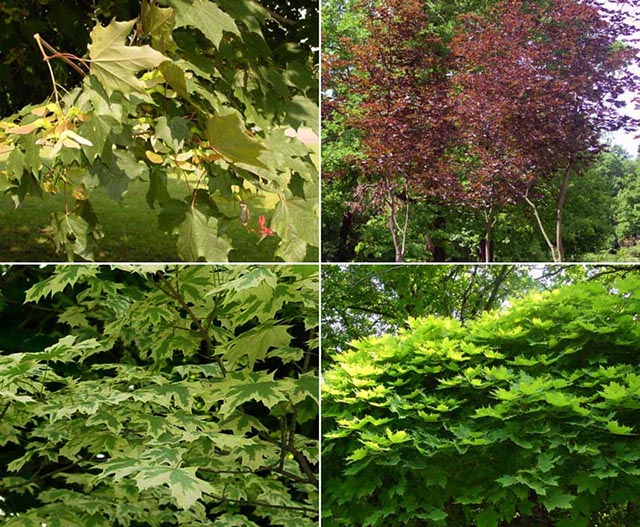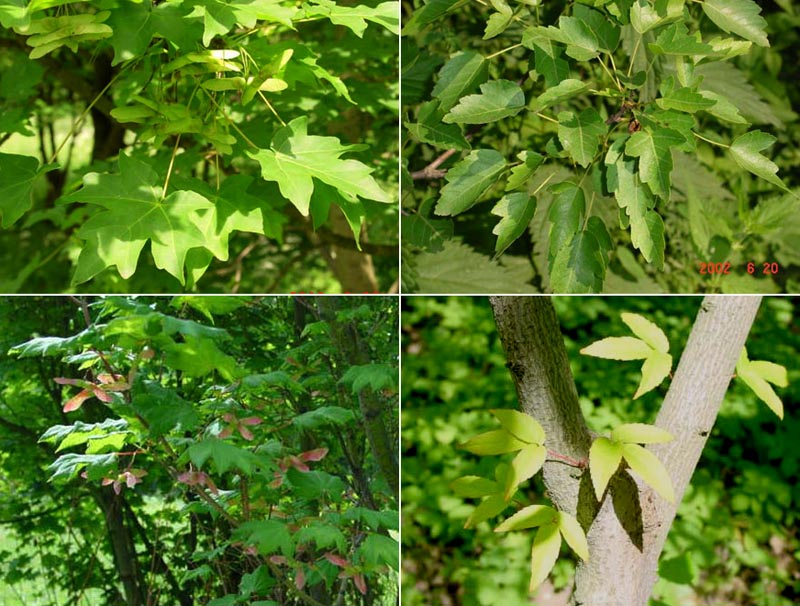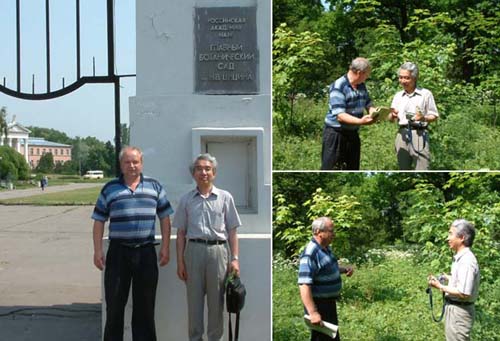
According to a network report offered by my friend, the following contents were shown.
"This garden, 360ha in area, was built for the purpose of science
investigation and education in 1945,
and has 16000 species of plants, such
as plants of the Soviet Union,
appreciation plants, plants of the Torrid
Zone and the subtropical zone.
It has also a beautiful Japanese garden
using rocks and more than 4000 sorts of trees are collected from all over
the world."
Japanese garden is at No.5 section of the following figure.
The Maple
garden was located at the lower part of the Japanese garden of No.5 in
the map of this right-hand side.

I could see lots of maples from China, Japan, North America, and from Europe. Let me show you some of them.
Upper two maples of the following figure are members of the group of
Karakogikaede (Acer aidzuense) from Japan.
The left is Acer ginnala
and the right is Acer tataricum.
Seeing it at a distance, they looked
like red flowers bloomed, in fact, they were not flowers but red wings
of seed.
The lower seemed to be Acer monspessulanum or some.

Let me show you the horticulture kinds of the European maple (Acer
platanoides) whose another name is Norway maple,
and they can see the
maple anywhere in Europe. It is famous also as a roadside tree.
The color
of the leaf of a pure species is true green.
The following horticulture
kinds are well known as those of European maple.
Upper left is called 'Schwedleri' whose leaves are a little brownish
and the shape of the leaf also differs from that of a pure breed.
Upper
right is 'Crimson King' and color of its leaves is purplish red and is
so-called "Nomura" version of European maple.
Lower left is 'Drummondii'
and the perimeter part of a leaf is white and beautiful.
Lower right is
'Globosum' and the feature is having thickly crowded leaves.

Let me show you the remaining photographs.
The upper left shows Field
maple (Acer campestre var.hebecarpum).
This species frequently
can be seen across Europe as well as Norway maple (Acer platanoides)
and Plane maple (Acer pseudoplatanus).
It is a feature of the field
maple that the angle between wings is more than180 degrees.
The upper right
is unknown. The lower left shows Acer circinatum, the U.S. version
of Acer japonicum from Japan.
The lower right is Acer mandshuricum
and is the type that has 3 leaflets as well as Acer nikoense from
Japan.

In fact, there was a drama developed after entering this botanical garden.
When walking around I asked where we could see maples,
and it turned out
that there is a female potted-plant researcher who is working at a room
of a research building,
and I could meet her.
She showed me the photograph
collection about the potted plants obtained on the occasion of her visit
to Japan.
She said that Mr. Alexis is a researcher of maples, and we decided
to walk to the main research institutes where he works.
And at last I could
meet him. Then, indeed did begin our discourse on maples between Russia
and Japan.
I showed him my homepage on maples with the English version at his laboratory.
Then, he kindly took me to the maple garden by car, and gave me a clear
explanation of maples there.
By his favor, I could arrive at the maple
garden and see lots of maples in this huge botanical garden.
